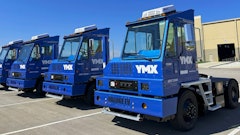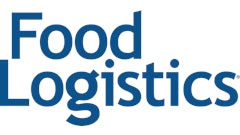Lombard, IL: The Council of Supply Chain Management Professionals (CSCMP) released its 23rd "Annual "State of Logistics Report", presented by Penske Logistics, at a press conference at the National Press Club in Washington, DC.
The report reveals that total US business logistics costs in 2011 rose to $1.28 trillion, a 6.6 percent increase from the previous year, accounting for 8.5 percent of US gross domestic product (GDP).
The report, authored by transportation consultant Rosalyn Wilson of Delcan, Inc., has tracked all costs associated with moving freight through the US supply chain since 1988. This year's report presents an overview of the economy over the past year, the logistics industry's key trends, and the total US logistics costs for 2011.
It examines which sectors of the industry are recovering, which are facing challenges, and areas that can be targeted for increased investment. The research concludes with a brief overview of industry indicators for the remainder of 2012. The supply chain management benchmark report is now available for distribution.
This year's report reveals that with overall revenue 15.3 percent higher than 2010, railroads gained market share, especially in intermodal, and did not experience capacity problems faced by the trucking sector. Trucking companies are also using intermodal rail help to offset the impacts of driver shortages and the costs of acquiring and maintaining new equipment. In spite of tightening capacity and an overall decline in volume, trucking rates were up 5 to 15 percent in 2011.
Even with the air cargo sector's record year for exports, the industry still experienced a decline, with domestic air cargo revenue down more than 3 percent compared with less than a 1 percent decline in international revenue. Ocean carriers' woes continued with growing excess capacity, rate erosion, service declines, and operational losses.
Inventory carrying costs in 2011 continued their rising trend and overall inventories have returned to pre-recession levels, which could be a cause for concern for the economy. The growth has occurred among wholesalers and manufacturers while retail inventories remained flat, indicating that inventory management processes have changed.
"Part of our mission at CSCMP is to develop and disseminate research that helps our members understand how to do their jobs better," said Rick Blasgen, president and chief executive officer of CSCMP. "Knowing how logistics and supply chain costs affect and are affected by the larger economy is a key part of this understanding. This is why we believe it's important to sponsor the annual 'State of Logistics Report,' which we present with support from Penske Logistics."
"The statistics and industry insights contained in this report will help companies better prepare for the business demands that lie ahead," Blasgen added. We look forward once again to working with Penske's thought leaders to present this year's research and translate its findings into real world terms."
"This report consistently delivers key insights that paint a broad picture of the supply chain industry and the US economy," said Joe Gallick, senior vice president of sales, Penske Logistics. "We're pleased to be sponsoring this widely followed report once again."
The "State of Logistics Report" is available to CSCMP members free of charge as part of their member benefits at http://cscmp.org/memberonly/state.asp. The price of the report is $395.00 US.



















